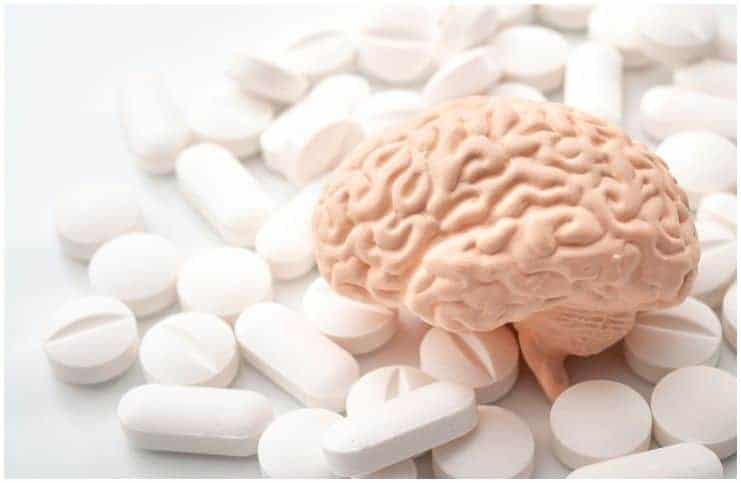Vivarin vs Adderall – detailed comparison:
Vivarin
It is the brand name of caffeine capsules (200 mg).
Caffeine is a central nervous system stimulant that acts by inhibiting the enzyme phosphodiesterase.
Uses
This medication is used to help you stay awake and alert when you are feeling tired or drowsy.
Dosage
The usual recommended dose is 1 capsule every 4 hours, as needed – no later than 6 hours before bedtime.
The maximum recommended dose is 1600 mg per day.
Side Effects and Precautions
Common side effects may include:
- restless behavior;
- skin rash;
- excessive crying;
- fussiness.
Rare side effects may include:
- sweating or shivering;
- loss of appetite;
- seizure (convulsions);
- feeding problems;
- drowsiness;
- stomach bloating;
- weakness;
- diarrhea;
- blood in the urine or stools;
- vomiting.
Drug Interactions
It may negatively interact with other medications, especially:
- amoxicillin;
- Adderall (amphetamine/dextroamphetamine);
- Benadryl (diphenhydramine);
- Advil (ibuprofen);
- Cymbalta (duloxetine);
- Aspirin Low Strength;
- Klonopin (clonazepam);
- codeine;
- Lamictal (lamotrigine);
- creatine;
- modafinil;
- hydrocodone;
- Seroquel (quetiapine);
- ibuprofen;
- Singulair (montelukast);
- Lexapro (escitalopram);
- Vyvanse (lisdexamfetamine);
- oxycodone;
- Xanax (alprazolam);
- phentermine;
- Zyrtec (cetirizine);
- tramadol;
- Wellbutrin XL (bupropion);
- Tylenol (acetaminophen).
Pregnancy & Breastfeeding
If you are pregnant, avoid using this medication since caffeine crosses the placenta to your baby and negatively affects him.
In addition, caffeine is excreted into breast milk and may cause side effects in your breastfeeding infant.
Adderall
It is a central nervous system stimulant that contains 2 different chemicals – amphetamine and dextroamphetamine. This medication works as a central nervous system stimulant for increased concentration, attention span, and focus.
Uses
This central nervous system stimulant is used to treat attention deficit hyperactivity disorder, a condition that involves excessive activity, difficulty sitting still, paying attention, and controlling behavior.
If left untreated, attention deficit hyperactivity disorder may negatively affect the sufferer, as well as his family life, since over 65 percent of children with this condition may still exhibit symptoms into adulthood.
In addition, this central nervous system stimulant may prevent symptoms of narcolepsy, which includes sudden attacks of daytime sleepiness.
Side Effects And Precautions
Common side effects may include:
- restlessness;
- stomach pain;
- dry mouth;
- headaches;
- difficulty falling asleep;
- problems staying asleep;
- unexplained weight loss;
- nervousness;
- nausea;
- vomiting;
- loss of appetite;
- uncontrollable shaking of a part of the body;
- erectile dysfunction;
- constipation;
- changes in sex drive;
- diarrhea.
Less common side effects may include:
- fever (high temperature);
- pounding heartbeat;
- feeling unusually suspicious of others;
- chest pain;
- numbness of an arm or leg;
- excessive tiredness;
- swelling of the eyes, face, tongue, or throat;
- seizures;
- hives;
- difficult speech;
- problems swallowing;
- shortness of breath;
- believing things that are not true;
- faintness;
- abnormally excited mood;
- hostile behavior;
- peeling skin;
- verbal tics;
- difficulty breathing;
- rash;
- blurred vision;
- itching;
- hoarseness;
- seeing things that do not exist.
Pregnancy & Breastfeeding
There are no well-controlled studies to determine the safe use of this central nervous system stimulant by nursing women, therefore, it may only be used if the potential benefits to the mother outweigh the potential risks to the breastfed baby.
In addition, there are no well-controlled clinical studies in pregnant women. Tell your healthcare provider that you are breastfeeding a baby before using this medication.
Alcohol
Avoid drinking alcoholic beverages while taking this medication since alcohol combined with stimulants substantially increases the risk of side effects.
Abuse
This central nervous system stimulant is a US Food and Drug Administration approved drug. However, due to the fact that it has a high potential for abuse, Adderall is in the category of controlled substances.
In the present day, it is abused mostly by young adults and college students. According to the data, an estimated 25% of college students regularly abuse this medication.
Signs and symptoms of overdose may include:
- hallucinations;
- cardiac rhythm abnormalities;
- coma;
- hyperventilation;
- loss of consciousness;
- uncontrollable tremor;
- vertigo (a condition where an individual feels as if he or the objects around him are moving);
- profound confusion;
- panic attacks.
READ MORE: Tolnaftate vs Miconazole
Drug Interactions
It may negatively interact with other medications, especially any of the following:
- ibuprofen;
- Abilify (aripiprazole);
- Lexapro (escitalopram);
- Advil (ibuprofen);
- Percocet (acetaminophen/oxycodone);
- Ambien (zolpidem);
- Prozac (fluoxetine);
- clonazepam;
- loryna;
- Ritalin (methylphenidate);
- Cymbalta (duloxetine);
- Suboxone (buprenorphine/naloxone);
- gabapentin;
- Topamax (topiramate);
- Klonopin (clonazepam);
- Vyvanse (lisdexamfetamine);
- Lamictal (lamotrigine);
- Wellbutrin (bupropion);
- Norco (acetaminophen/hydrocodone);
- Zoloft (sertraline);
- omeprazole;
- Xanax (alprazolam);
- prednisone;
- trazodone;
- tramadol;
- Seroquel (quetiapine).
READ MORE: Vestura vs Gianvi
Bottom Line – Vivarin vs Adderall
Vivarin is a central nervous system stimulant that may be used to restore mental alertness. It works by stimulating the brain. Every capsule contains 200mg of caffeine.
Adderall (active ingredients – amphetamine and dextroamphetamine) is a medication that is prescribed for the treatment of attention deficit hyperactivity disorder. Individuals diagnosed with ADHD are using this medication to help them concentrate and focus more.
In conclusion, both medications act as a central nervous system stimulant, but Adderall also blocks the uptake of dopamine and stimulates the release of monoamines.
READ THIS NEXT: Microgestin vs Junel
References http://jcsm.aasm.org/viewabstract.aspx?pid=29198 http://www.nejm.org/doi/full/10.1056/NEJMoa054065 http://med.stanford.edu/news/all-news/2017/01/caffeine
